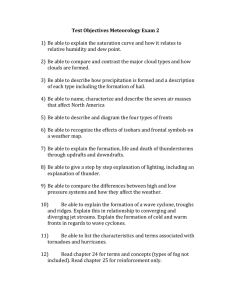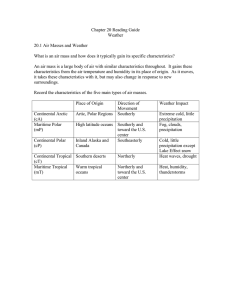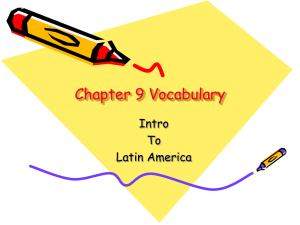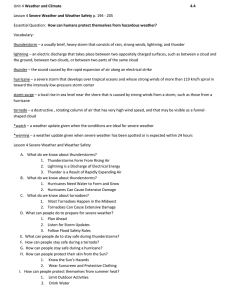Chapter 20 Reading Guide Weather 20.1 Air Masses and Weather
advertisement
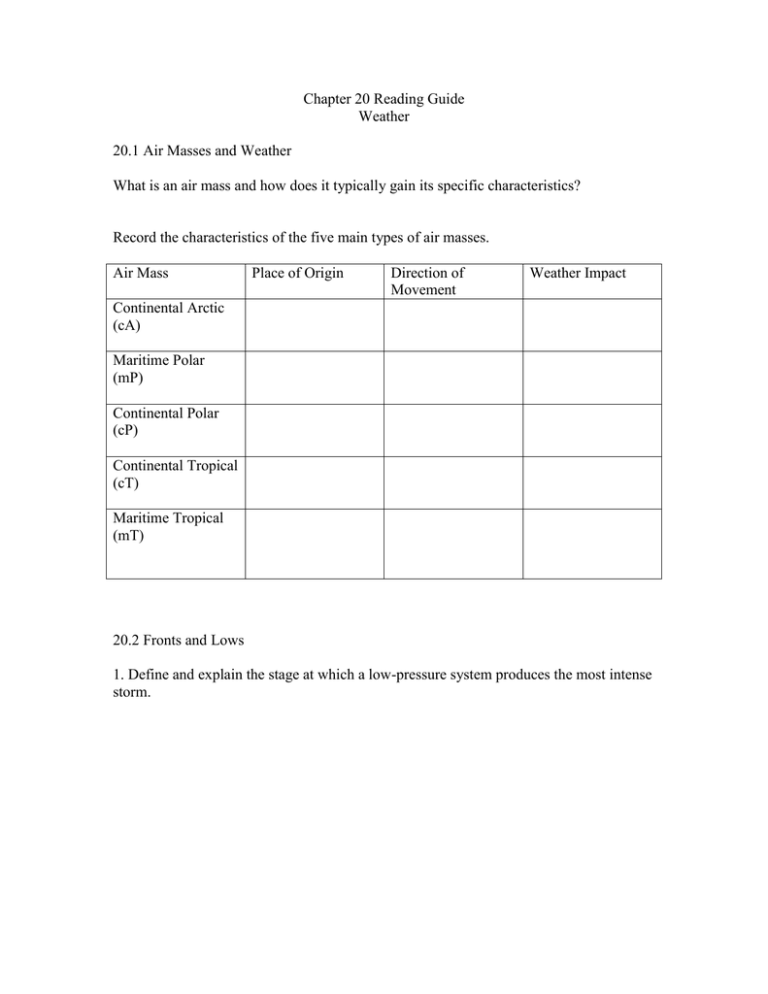
Chapter 20 Reading Guide Weather 20.1 Air Masses and Weather What is an air mass and how does it typically gain its specific characteristics? Record the characteristics of the five main types of air masses. Air Mass Place of Origin Direction of Movement Weather Impact Continental Arctic (cA) Maritime Polar (mP) Continental Polar (cP) Continental Tropical (cT) Maritime Tropical (mT) 20.2 Fronts and Lows 1. Define and explain the stage at which a low-pressure system produces the most intense storm. Complete the organizer with information describing different fronts and the weather they bring. 1. Warm Front 2. Cold Front 3. Occluded Front 4. Stationary Front 20.3: Thunderstorms and Tornadoes Complete the organizer by listing the conditions and locations where thunderstorms most often develop, then listing and defining their possible effects. THUNDERSTORMS DEVELOP 1. a.) b.) c.) and can cause 2. \ 4. which is 3. which are 5. List and describe some ways that meteorologists predict tornadoes and warn people of the related danger. 20.4: Hurricanes and Winter Storms Complete the organizer to help you track the steps in the formation, development, impact, and weakening of a hurricane. 1. Mild atmospheric disturbance over tropical ocean 2. 8. 7. Storm nears land causing: A B C D E 3.Air cools and condenses releasing heat 6. Storm moves according to global wind patterns 4. \ 5. Coriolis effect rotates air in the storm. List and describe the characteristics of a blizzard: 20.5: Forecasting Weather In the organizer below, record important elements of the forecasting process. 3.surface observations 1. Satellites take 2. Radiosondes \ / 4. Station models + 5. = 6. knowledge of local weather patterns 7. Explain why it is important that weather station models and surface maps be readable to meteorologists in any country:

